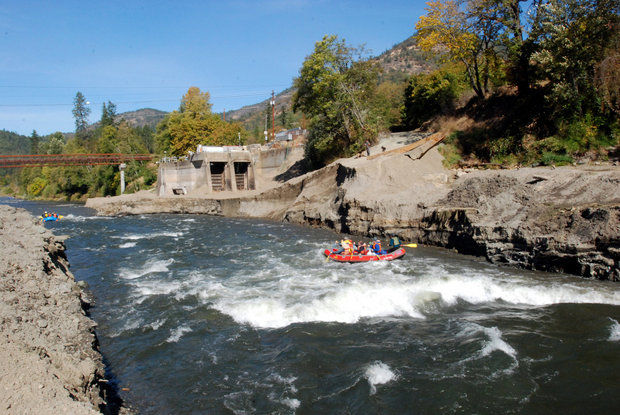NSIA is delighted to hear this! What so many of us expected, finally being confirmed. Special thanks to all our members who worked on this, especially Dave Strahan, Jim Martin and Maddy Sheehan.
OSU researchers find Rogue, Calapooia river ecosystems recovered quickly after dams removed
By
Scientists at Oregon State University have found that the ecosystems on two rivers quickly recovered after small dams were removed, indicating the environmental damage from leaving the dams standing was greater than the damage from removing them.
The study, which was published in the online peer-reviewed scientific journal PLOS ONE, looked at insect life and riverbed geology before and after the removal of the Savage Rapids Dam on the Rogue and Brownsville Dam on the Calapooia. The sampling sites were upstream and downstream of the dams.
The Savage Rapids Dam was removed in 2009, and the Brownsville was taken out in 2007.
The scientists found that the numbers and varieties of insects downstream of the dams recovered to levels elsewhere on the river within a year, despite large amounts of silt filling the river bottom after the dams were breached. The physical changes to the riverbed — changes in composition of the rocks and gravel and depth and slope of the riverbed — persisted for two years after the dams was removed.
“The processes of ecological and physical recovery of river systems following dam removal are important, because thousands of dams are being removed all over the world,” lead author Desiree Tullos, associate professor of biological engineering, said in a statement. “Depending on the benefits of the dam, it’s often cheaper to remove them than to repair them.”
Riverbeds typically scour down to bedrock downstream of dams because the dams block rocks and gravel from rolling downstream to replace those that wash away. Meanwhile, large amounts of sand and gravel build up behind the dams.
The study concluded that the results indicated the ecological damage of the dams remaining in place was greater than any damage from removing them.
“In the end, most of these large pulses of sediment aren’t that big of a deal, and there’s often no need to panic,” Tullos said. “The most surprising finding to us was that indicators of the biological recovery appeared to happen faster than our indicators of physical recovery.”
Emily Stanley, professor of limnology at the University of Wisconsin, said the findings were similar to those she found on rivers in Wisconsin.
“A quick response like this meant that concerns about drawn-out damages from (former) reservoir sediments moving downstream didn’t pan out,” she said in an email. “It also illustrates the resilience of these communities. If physical conditions are improved, organisms will respond.
“This may not happen in every dam removal case or for all species though, and caution is always warranted.”
— The Associated Press

